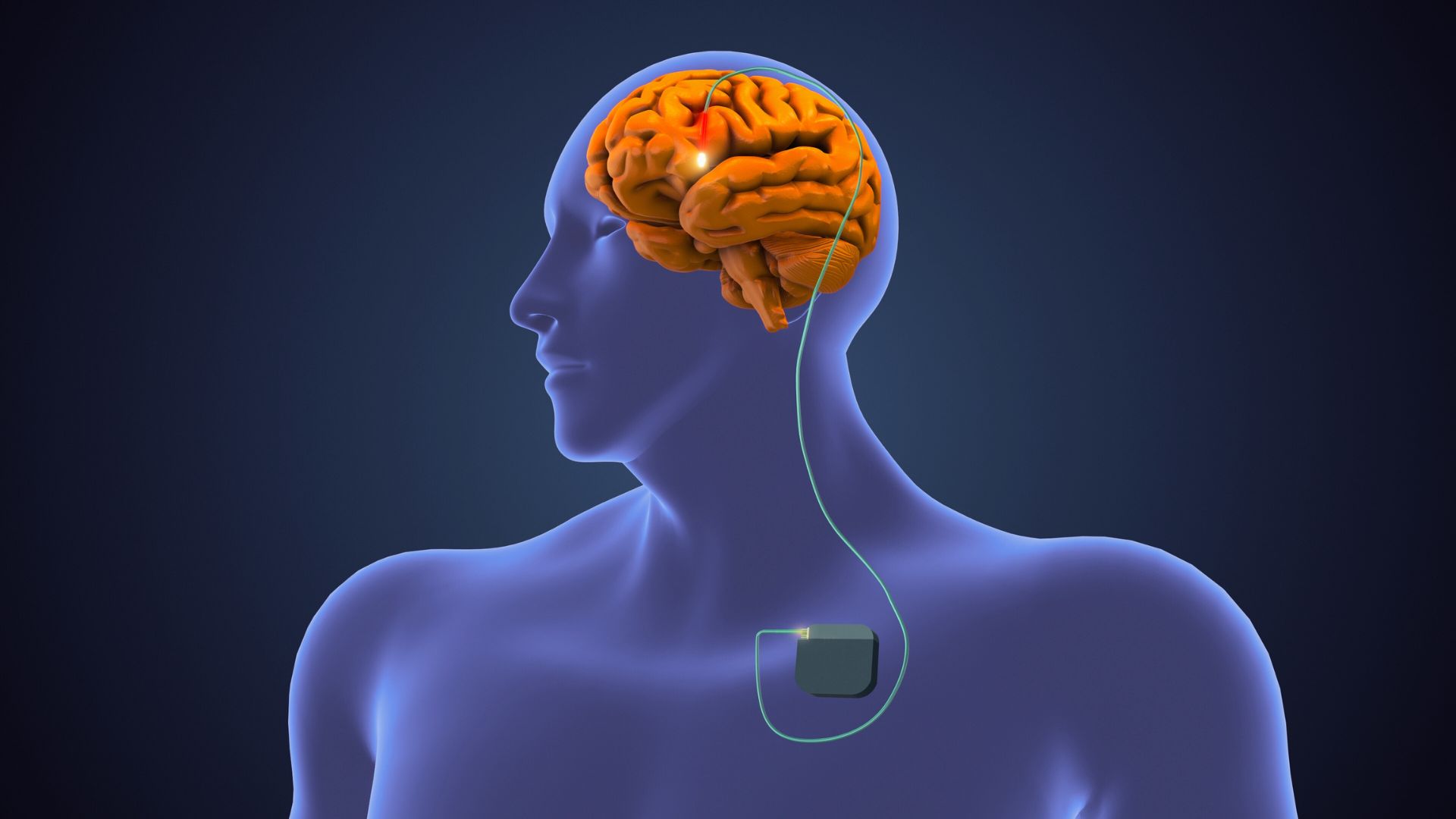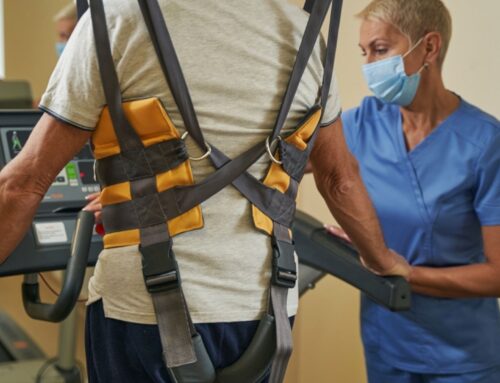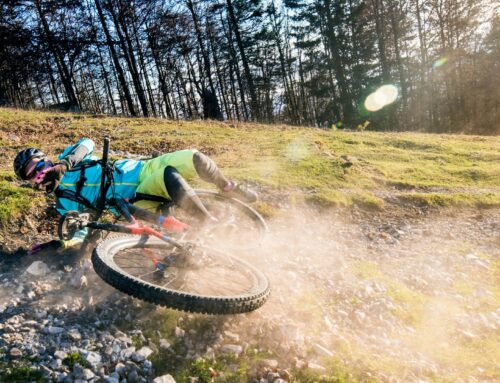Physical activity is an essential part of recovery from a traumatic brain injury (TBI). There is substantial evidence to support the benefits of regular exercise for people living with TBI regardless of the severity and complexity of symptoms. [i] Despite this evidence, adoption of an exercise program—and adherence to one—can be hindered by several barriers to physical activity.
The Canadian Physical Activity Guidelines recommend people ages 18 to 64 years engage in 150 minutes a week of moderate to vigorous exercise.[ii] These can be activities that range from jogging to a group sport to swimming laps or taking a step class.
However, the average adult population struggles to maintain a physically active lifestyle. In fact, only 49% of adults under the age of 80 living in Canada get at least 150 minutes of moderate to vigorous physical activity per week.[iii]
For people living with TBI, evidence would suggest 3-5 times a week or 20 to 60-minute intervals, where the intensity is 13/20 according to the Borg Rating of Perceived Exertion Scale or at a moderate intensity.[iv]
Common barriers to physical activity and engagement in exercise can include but are not limited to: finances, transportation, time, self-confidence, body image, decreased initiation or motivation, and accountability. These common barriers are further intensified with a brain injury.
Health professionals recognize the importance of exercise and promote a physically active approach to recovery for someone with a traumatic brain injury, working within the abilities of the individual.
Here are some core tips to eliminating barriers to physical activity and exercise if you have a traumatic brain injury:
1) Make it fun and meaningful
The words “exercise” or “physical activity” aren’t always synonymous with “cardio machines” and “weights”. If a gym setting is not your preference, that’s okay. If you find a physical activity that is something safe, fun, you can break a sweat, and you enjoy doing, the likelihood of overcoming barriers to this activity are much higher.
The important factor is to bring whatever activity you choose to an intensity that is meaningful and provides benefits to you. Some great examples are bowling, rock climbing, Zumba classes, or walking with friends or pets.
2) Take the friendly approach
If you’re taking the first steps in improving adherence to exercises or physical activity, make an effort to try it with friends. This helps to improve the dialogue around what you are trying to accomplish and keeps it a priority. Essentially, “birds of a feather flock together”, thereby perpetuating physical activity and exercise throughout your life.
3) Seek professional help and guidance
Appropriate form, technique, a tapered approach, and recommendations on equipment and machinery can really help you with maintaining the consistency in physical activities. A professional can also provide accountability and help you set some realistic goals around physical activity and exercise.
4) Be resourceful
Things can get expensive. Looking out for free online resources, or tapping into industry leaders’ websites for examples of exercises to try out can be a great start. It keeps exercises or physical activity ideas fresh and interesting. In addition, organizations like the Brain Injury Society of Toronto have loads of free information and weekly activity classes, as do some of your friendly, local businesses. Propel Physiotherapy has an entire series called Exercise Programs to Connect Mind and Muscle After Brain Injury that is available for free on our YouTube channel.
5) Keep track and schedule
Having a pre-scheduled routine or plan helps with your confidence to overcome barriers to physical activity. A schedule keeps you on track and provides a plan to help you achieve your goals.
When it’s raining have a plan for indoor activities. If you don’t feel up to an intense workout, do something restorative like stretching or yoga. If you can’t get to the gym or workout area, try some pre-saved videos of your favourite exercises set aside for home.
Another fun way to stay engaged in physical activity is to set goals on your pedometer found on your smartphone or watch.
6) Keep things simple
Some exercise and physical activity is always better than none, and a lot of it is hard to come by. Life can be busy and challenging. It is not always possible to accomplish what we set out to do.
Keeping the types of exercises or physical activities simple and manageable at the beginning will effectively increase the likelihood of picking it up in the first place. A few neighbourhood laps around the block with a loved one can turn into a 5Km run with a group in no time!
7) Modify and move forward
Finding ways to modify or adapt your exercise or physical activity routine may simple mean taking more breaks, using less resistance, or changing body positions. Modifying or adapting movements from their original version does not mean the benefits are lost. You’re just going about it in a different way!
Being okay with modifications or adaptations help us cross some physical and mental barriers to participating in consistent exercise routines.
Starting and staying with an exercise routine is challenging. These suggestions provide a great start in helping you overcome any barriers to physical activity you encounter. At Propel Physiotherapy our therapists are experienced and knowledgeable in helping clients with brain injury return to activities. Come see us today to help you return to the activities you enjoy.
References
[i] Elizabeth K. Wise, Jeanne M. Hoffman, Janet M. Powell, Charles H. Bombardier, Kathleen R. Bell. Benefits of Exercise Maintenance After Traumatic Brain Injury. Archive of Physical Medicine and Rehabilitation. Pages 1319-1323. 2012.
[ii] CSEP Guidelines, Accessed April 4, 2022
[iii] Statistics Canada, custom tabulations, CHMS, Cycle 6 [2018 and 2019].
[iv] Hassett et al., 2017. Fitness training for cardiorespiratory conditioning after traumatic brain injury. Cochrane Database of Systematic Reviews.
Written by

















